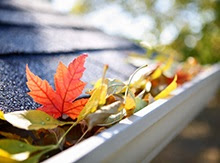
The winter season is drawing near which means sub-zero arctic-like temperatures, icy conditions, and a whole lot of snow. That’s why it’s time to start thinking about how to protect your home from any potential damage the frigid temperatures and snow may bring. Taking charge now, before it is too late, may help you avoid an insurance claim later.
Winter home preparation guide
By the time winter arrives, your home should be ready for whatever tricks Old Man Winter may have up his sleeve. There’s nothing worse than having to deal with a leaky window, broken furnace or a burst pipe in the middle of winter. These eight tips and tricks will help prevent any unfortunate winter mishaps or water damage.
- For heat’s sake have your furnace professionally serviced. A routine maintenance check each autumn will help ensure your furnace is running properly and efficiently. Also, if you have an older thermostat, consider replacing it with a programmable one to save money on heating costs.
- Inspect all windows and doors for leaks. In order to prevent heat loss, make sure your windows and doors are properly sealed. Check the weather-stripping around windows and door frames, and replace where necessary. Also check for drafts and caulk both inside and out where necessary, to keep the heat in and the cold out.
- Sweep the chimney. Before you use your fireplace, make sure the chimney and vents are clean and in good condition by having your chimney looked at by a professional. This will help prevent chimney fires and carbon monoxide from building up and finding its way into your home.
- Clean out your gutters. It’s important your eaves are free of any debris such as leaves, dirt and sticks. Clogged gutters prevent the draining of rain and melting snow which could result in household leaks. Also, make sure your downspouts extend away from your house by at least five feet to ensure that water runs away from your house and not towards it.
- Inspect the roof. While cleaning your eaves, inspect your roof for any missing, loose or damaged shingles. If your roof needs attention call a roofer to help you with the repairs or maintenance. Also ask them to look at the caulking around the chimney and air vents.
- Turn off any faucets outside. Water left undrained can freeze, which can cause the pipes to burst. Disconnect your garden house and drain the remaining water.
- Trim your bushes and trees. Make sure any overgrown bushes or trees are trimmed back away from your house and electrical wires. This will help decrease your risk of property damage and power problems.
- Pad exposed pipes in unheated areas. This is an easy and inexpensive method to help prevent water damage resulting from a frozen pipe. Even the smallest of pipes can cause a lot of damage. Pipes in the basement, attic or crawl space are some examples of pipes you may want to cover.
Taking the time to winter-proof your home is a small price to pay especially if it helps prevent damages. Now is also a good time to stock up on all the winter essentials too including salt, sand, and snow shovels. It won’t go to waste and you’ll need them before you know it.

